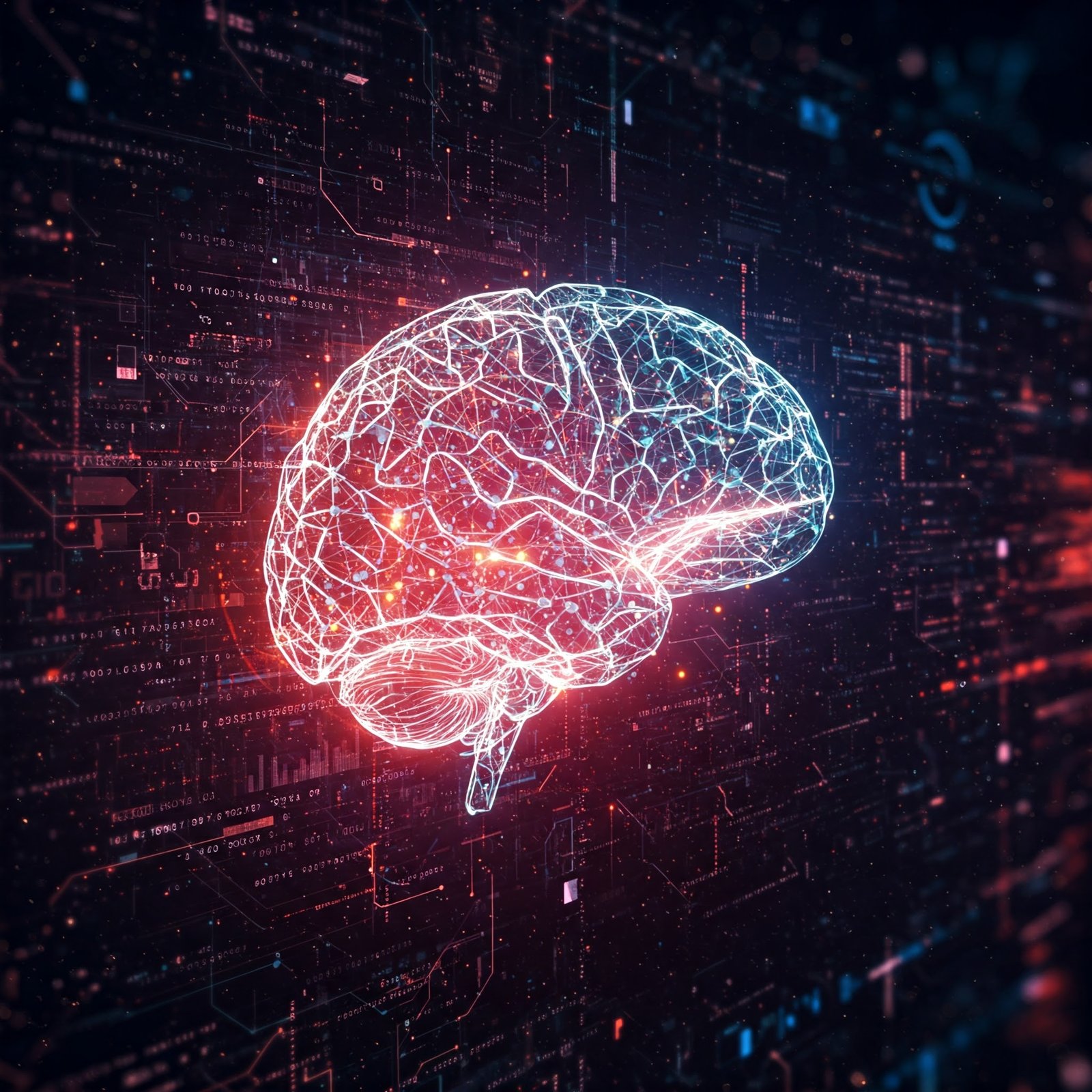Deep learning, a subset of AI, mimics the brain’s neural networks to drive innovations like facial recognition, autonomous vehicles, and medical diagnostics. While architectures like CNNs, RNNs, and Transformers transform industries, challenges such as data dependency, biases, and the “black box” problem raise ethical concerns. Privacy, job displacement, and surveillance risks further demand attention. Yet, advancements in hardware, explainable AI, and democratized tools promise a future where AI enhances human potential while sparking societal reflection.
Key Points:
- Advancements in hardware and explainable AI promise a more inclusive, innovative future.
- Deep learning powers technologies like facial recognition, self-driving cars, and medical diagnostics.
- Architectures like CNNs, RNNs, and Transformers drive breakthroughs across industries.
- Challenges include data dependency, biases, and the “black box” problem.
- Ethical concerns involve privacy, job displacement, and surveillance risks.
In the vast and ever-evolving landscape of artificial intelligence (AI), one term has emerged as a cornerstone of innovation—deep learning. It’s not just a buzzword; it’s the technological engine driving everything from self-driving cars to voice assistants, medical diagnostics, and even creative content generation like this very piece. But what exactly is deep learning? And why does it hold such transformative power in reshaping industries and redefining human potential?
The Genesis of Deep Learning
At its core, deep learning is a subset of machine learning that mimics the human brain’s neural networks to process data and create patterns for decision-making. Imagine teaching a computer to recognize a cat in an image—not by explicitly coding rules about fur texture or whisker shapes—but by feeding it millions of labelled images until it “learns” on its own. This ability to learn without explicit programming is what makes deep learning so revolutionary.
The concept isn’t new; it traces back to the 1940s when researchers first began exploring artificial neurons. However, it wasn’t until the 21st century—with advancements in computational power, big data availability, and algorithmic improvements—that deep learning truly came into its own. Today, it powers some of the most sophisticated AI systems we interact with daily.
How Does Deep Learning Work?
Deep learning relies on artificial neural networks, which are structured layers of interconnected nodes (neurons). These networks consist of three primary types of layers:
- Input Layer: Where raw data enters the system.
- Hidden Layers: Multiple layers where complex computations occur. Each layer extracts increasingly abstract features from the input data.
- Output Layer: Produces the final result, whether it’s classifying an object, predicting stock prices, or generating text.
For example, if you’re training a model to identify handwritten digits, the input layer might receive pixel values of an image. Hidden layers would progressively detect edges, curves, and shapes, while the output layer would classify the digit as “7” or “4.”
What sets deep learning apart is its capacity to automatically discover intricate structures within large datasets—a feat previously impossible with traditional algorithms.
Architectures That Define Deep Learning
Not all neural networks are created equal. Different architectures excel at solving specific problems:
- Convolutional Neural Networks (CNNs) dominate image-related tasks. For instance, CNNs power facial recognition systems used by smartphones and security cameras.
- Recurrent Neural Networks (RNNs) and their advanced variant, Long Short-Term Memory (LSTM) networks, handle sequential data like speech or text. They enable applications like language translation and sentiment analysis.
More recently, Transformers have taken center stage in natural language processing (NLP). Models like OpenAI’s GPT series and Google’s BERT leverage attention mechanisms to understand context better than ever before, enabling breakthroughs in chatbots, summarization tools, and more.
Applications Transforming Industries
Deep learning isn’t confined to research labs; it’s out there, actively revolutionizing industries. Here are just a few examples:
Healthcare
Imagine diagnosing diseases faster and more accurately than ever before. Deep learning models can analyze medical scans, detect anomalies in X-rays, predict patient outcomes, and even assist surgeons during operations. One standout example is AlphaFold , developed by DeepMind. This groundbreaking tool predicts protein structures with atomic accuracy, solving a decades-old problem in biology and accelerating drug discovery.
Autonomous Vehicles
Self-driving cars rely heavily on deep learning to interpret sensor data, navigate roads, and make split-second decisions. Tesla’s Autopilot, for example, uses convolutional neural networks (CNNs) to process visual inputs and ensure safe navigation. Similarly, companies like Waymo use deep learning to simulate countless driving scenarios, refining their algorithms to handle edge cases.
Natural Language Processing (NLP)
From chatbots to translation services, NLP has been transformed by deep learning. Models like OpenAI’s GPT series and Google’s BERT have achieved near-human levels of understanding and generating natural language, enabling applications ranging from customer support to real-time language translation.
Creative Arts
Even creativity isn’t immune to deep learning’s influence. Tools like DALL·E generate hyper-realistic artwork based on textual descriptions, while others compose music or write poetry. Artists and creators now collaborate with AI to push the boundaries of imagination.
Limitations and Ethical Considerations
Despite its promise, deep learning isn’t without challenges. Training these models requires immense computational resources, often leading to significant energy consumption. Moreover, biases present in training data can perpetuate harmful stereotypes or discriminatory practices in AI outputs.
One major concern is the black box problem : many deep learning models operate as opaque systems whose decision-making processes are difficult to interpret. In fields like healthcare or criminal justice, this lack of transparency raises serious ethical questions. For example, a biased facial recognition system might misidentify individuals of certain ethnicities, leading to wrongful arrests or surveillance abuses.
Another issue is data dependency . Deep learning thrives on massive amounts of high-quality data. If the dataset is flawed or unrepresentative, the resulting model will inherit those flaws. This was evident in Amazon’s infamous recruiting tool, which learned to favor male candidates because it was trained on resumes predominantly submitted by men.
Societal Implications
Deep learning doesn’t exist in a vacuum; it impacts society in profound ways. As AI systems grow more capable, they raise important philosophical and ethical questions.
Job Displacement vs. Creation
Automation driven by deep learning could displace jobs in sectors like manufacturing, retail, and customer service. However, it also creates opportunities in AI development, maintenance, and oversight. Governments and organizations must invest in reskilling workers to adapt to this shifting landscape.
Surveillance Concerns
The same technologies that enhance security—facial recognition, predictive policing—can also infringe on privacy rights. Without proper regulation, deep learning could enable mass surveillance, eroding civil liberties.
Bias and Fairness
Biases in AI systems reflect societal inequities embedded in training data. Efforts to address this include fairness-aware machine learning frameworks and diverse datasets. Yet, achieving true fairness remains an ongoing challenge.
The Future of Deep Learning
As hardware continues to advance—think quantum computing—and techniques like transfer learning and federated learning gain traction, the possibilities seem limitless. We may soon see AI systems that not only mimic human cognition but also exhibit forms of general intelligence, capable of reasoning across diverse domains.
But perhaps the most exciting prospect lies in democratizing access to deep learning tools. Platforms like TensorFlow and PyTorch have already made cutting-edge AI accessible to hobbyists and small businesses alike. As barriers lower, innovators worldwide will harness this technology to solve local problems, fueling a global wave of progress.
Final Thought
Deep learning represents more than just a technological leap—it embodies humanity’s relentless pursuit of knowledge and our desire to transcend limitations. By emulating the human brain’s complexity, it opens doors to innovations once thought impossible. Yet, with great power comes great responsibility. As we stand at the precipice of an AI-driven future, let us strive to wield deep learning ethically, inclusively, and sustainably.
So, the next time your phone recognizes your face or suggests the perfect song, take a moment to appreciate the silent genius behind it all—deep learning, the quiet force powering the AI revolution.



